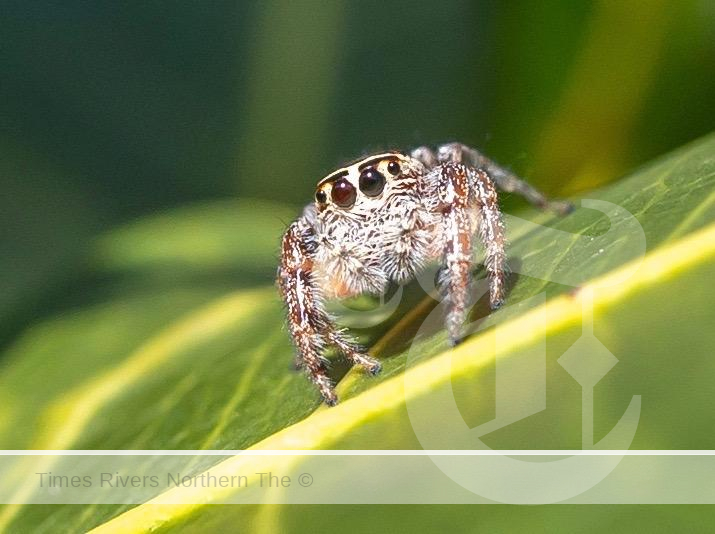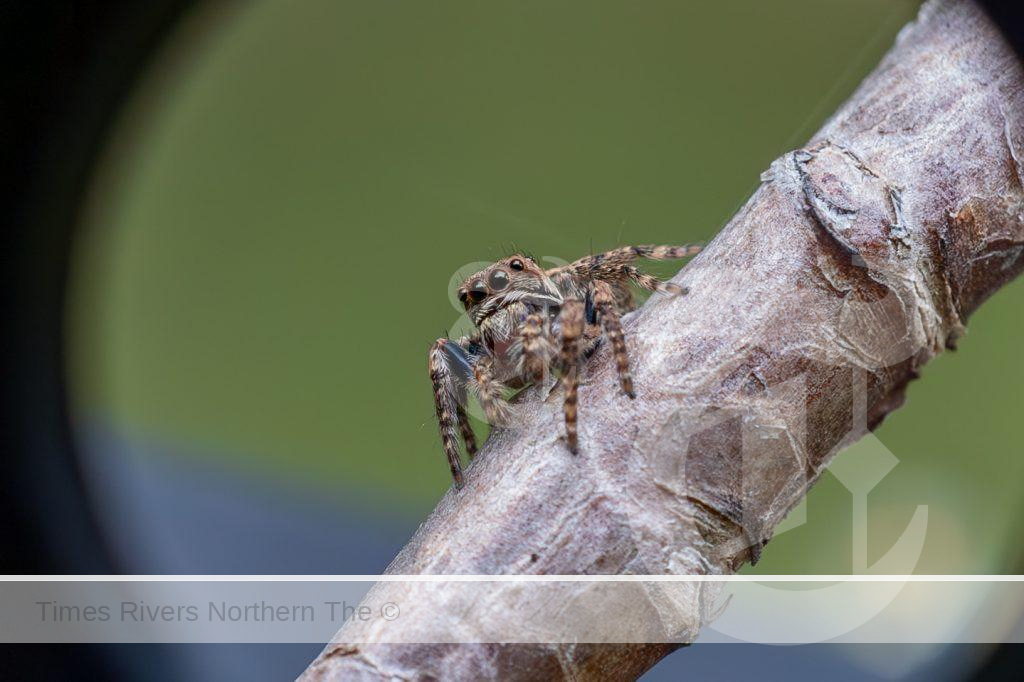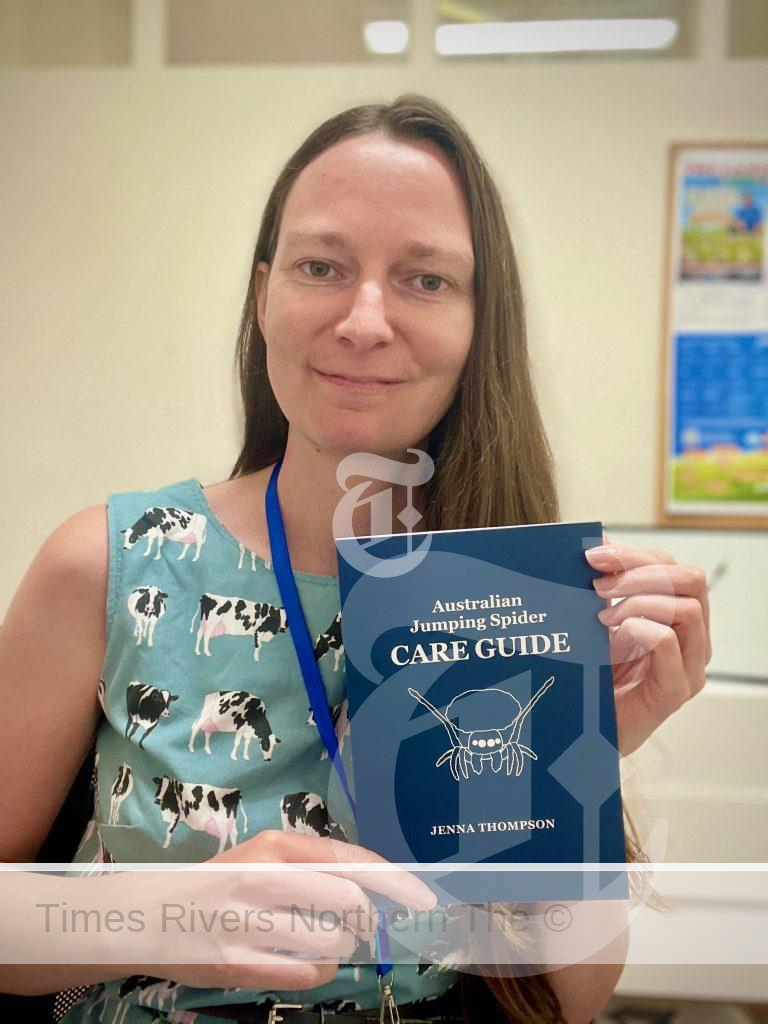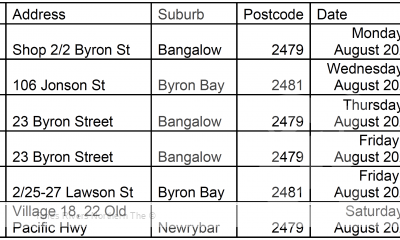Spider woman’s book lifts lid on care risks
By Tim Howard
Jenna Thompson has always had a soft spot for spiders.
When she and her partner Dennis Mavridis moved houses in Maclean, before they finally settled at the property near Lawrence, she recalls packing up the huntsman that had taken residence with them and moving it into their new home.
But the former school teacher and journalist, who does communications for the NSW Department of Primary Industries, took this love of arachnids to a new level when she discovered jumping spiders.
These spiders – think of the stunning, if tiny, dancing peacock spiders – are the new darlings of the micro-pet world.
And Jenna, who stumbled across one a couple of years ago at her home and helped it raise 32 babies, has put everything she learned from that experience into a 64-page self-published booklet, Australian Jumping Spider Care Guide.
Asked to explain how these spiders have broken down the instinctive fear spiders bring out in most people, Jenna said it came down to the “cuteness factor”.
“These spiders have the big, forward-facing eyes. They’re fuzzy, they almost look like teddy bears,” she said.
“I’ve seen people online call them spider puppies, or web puppies because they do really break down that scary spider vibe.
“And they’re very smart. They sort of work out pretty quickly, that big person over there isn’t going to eat me.”
Jenna cannot recall how the fascination with this species of spider started, but she thinks it was around the time that Jürgen Otto’s stunning pictures of peacock spiders started making headlines.
She said she had been vaguely aware of their existence due to some posts on Facebook, but a chance discovery of an incapacitated female jumping spider in her backyard two years ago changed her focus.
“I wasn’t even looking for her to be honest,” Jenna said.
“I knew I wanted to keep one for a couple of weeks to get the feel of them and understand them a bit more. Just out of curiosity.”
Luckily for her new charge Jenna had just finished caring for some green tree frog froglets and had a supply of live little crickets which she tried out as a jumping spider food source.
“She was a big fan of those crickets,” Jenna said. “She went from struggling to turning things around very quickly.’

The forward facing eyes, the shaggy coat. They’re just some of the characteristics of the jumping spider that are making them the new darlings of the pet world.
But Jenna was in for lot more surprises, 32 in all, beginning just a week later.
“She was pregnant, so within less than a week of having her she went straight into nesting and then produced 32 offspring a couple of months later,” Jenna said.
Jenna spotted an opportunity to gather more information about this species.
“I just wanted to keep her in captivity, understand how she behaves, how she reacts to things and then let her go again,” Jenna said.
“With the surprise babies, I sort of took it on the chin and went cool, this is a great opportunity to learn more about them from birth.”
But even basic details like, how long should I wait until they come out of the nest, were hard to come by, even online groups selling spiders and products to care for them.
“I thought it was strange that, for people who are breeding and selling them, they couldn’t really tell me how long it was going to take before they hatched,” she said.
So, Jenna decided it was time to fill in the blanks and began to record the data the hatchlings provided.
It wasn’t an easy task, looking after animals about the size of a pinhead.
“I almost went blind,” Jenna said.
“But I found there’s so much data to come from them and there were patterns in that data.”
Unfortunately, Jenna found people with a commercial interest in the spiders had attitudes ranging from indifferent to hostile.
“There was really no interest in that information,” she said. “I found I was pretty much alone in actually recording this kind of data, at least within the hobby community.”
Instead, Jenna went down the scientific route and found scientists looking at the jumping spiders were also amazed by what they were finding out about these tiny creatures.
“I started looking at scientific papers, reaching out to the scientific community and just got really into it,” Jenna said.
“One study, for example, found that they actually have an REM sort of sleep just like us.”
But it’s what the spiders do when they’re awake and hunting for a meal that really has scientists on the edge of their seats.
Jenna said she’s been in contact with New Zealand scientist Dr Ximena Nelson, who has just received a A$1million grant to study the hunting tactics of Portia jumping spiders.
“It’s very similar to the way a lion hunts in that it assesses the situation it compares the risks and the rewards which isn’t invertebrate behaviour,” Jenna said.

Photographer Tom Wainwright has been hard at work tracking down jumping spiders in the Northern Rivers area. He’s captured some of the features that are turning them into sought after pets.
Prof Nelson, while speaking to the press last month, said the research had ramifications for humans.
She said the new research would test whether planning is possible, not only in mammals and birds with large brains, but also in small animals with tiny brains such as Portia, which has a brain with less than 1 million times fewer neurones than a human brain.
“Our findings will be significant because they could lead to the development of algorithms that enable the creation of artificial planning systems in machines with severe power constraints, such as those used on space missions. This may have implications for artificial intelligence,” Prof Nelson said.
Jenna said she was thrilled that Prof Nelson not only read her book but provided positive feedback and advice for any further editions.
“She also shared some fascinating information about population decline for the species and the importance of returning spiders to the exact location they were found after any studies are completed,” Jenna said.
Jenna said she had come to a similar conclusion after her contact with the species.
She said she had put the spider she cared for into a clear acrylic container which is commonly marketed and sold as a standard jumping spider enclosure.
She said the spider was happy to nest in the container for two months while she hatched her babies, but after that she exhibited some troubling behaviour.
“Within a day or two of that spider emerging from the nest, she began obsessively pacing around the top of her enclosure. To me, it didn’t look normal, she didn’t look happy.”
“That’s when I started to realise she’s actually a really smart spider, and to put her in something so tiny and understimulating was totally inappropriate for her.”
So how big an area do jumping spiders need?
As the name suggests, they’re active creatures and one that lived in the kitchen at her workplace, the old Agricultural Research Station at Trenayr near Grafton, moved around the whole room seeking food and mates.
It’s no surprise that when Jenna put those views in the spider community it generated opposition.
“There was a real lack of information out there, accurate information,” she said.
“I have my reservations about the enclosures. I don’t think they are appropriate.
“People were constantly asking questions, good questions, like, why is my spider behaving this way or what’s the best spider to start with?
“Those questions were often answered by the online community, but when it came to enclosures and behaviour, the answers given were often wrong.
“Some of the answers simply directed you to go and buy a product that doesn’t have any consideration for the welfare of the spider.

Clarence Valley woman Jenna Thompson has just written an informative booklet on how to care for the latest craze in micro-pets, jumping spiders. It’s available online.
It’s something Jenna has taken to heart and as much as she enjoys having spiders around, she won’t be keeping any in tiny enclosures.
“I prefer to see them in the wild, in their natural habitat,” Jenna said.
“Though I know the scientists I’ve spoken to really struggle with the ethics of containing these spiders in those little cages while they study them.”“But they and I both realise it’s for a purpose, it’s the most efficient way to view them in a scientific context, and it’s not for their entire lives.”
“For me the issue is, if you’re going to have them as a pet, it’s not good enough to just stick them in a small cage on a bookshelf with cute little trinkets inside that appeal to you and not the spider.”
Jenna says this book could be the start of something more.
“It’s still early days in unlocking the potential of these spiders, but I’m already thinking about how to build upon and expand this guide as more information is discovered about them,” Jenna said.
Already she’s enlisted the macro-photographic skills of photographer Tom Wainwright to capture close up images of local spiders.
“I’ve given Tommy a bingo card of spiders I would like photographed and he’s done a great job of finding them and sending me the photos,” she said.
“His beautiful photos will definitely compliment the next edition.”
To get a copy of the book Jenna has set up a web page.
For more local Clarence Valley news, click here.





 Tweed Shire News2 years ago
Tweed Shire News2 years ago
 Motoring News1 year ago
Motoring News1 year ago
 COVID-19 Northern Rivers News3 years ago
COVID-19 Northern Rivers News3 years ago
 COVID-19 Northern Rivers News3 years ago
COVID-19 Northern Rivers News3 years ago
 Northern Rivers Local News3 years ago
Northern Rivers Local News3 years ago
 Health News3 years ago
Health News3 years ago
 COVID-19 Northern Rivers News3 years ago
COVID-19 Northern Rivers News3 years ago
 NSW Breaking News3 years ago
NSW Breaking News3 years ago

























